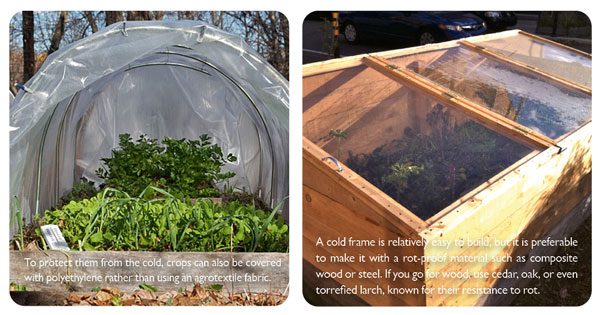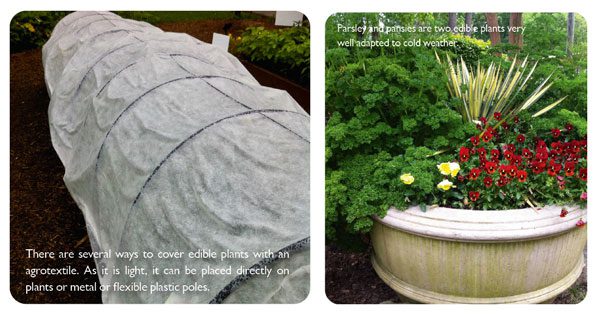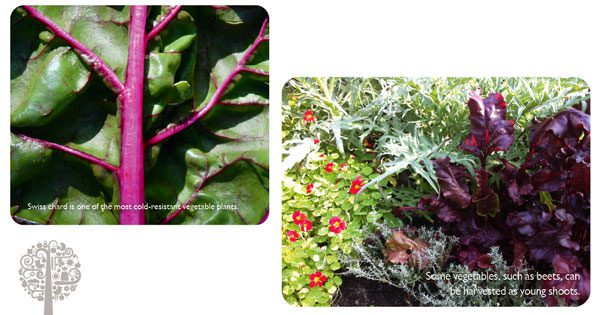Several vegetables such as Swiss chard, beets, bok choy, carrots, spinach, kale, lettuce, leeks, snow peas, and radishes are renowned for their ability to grow well in cool weather. The same goes for some herbs and edible flowers such as chives, tarragon, marjoram, mint, parsley, and pansies.
Depending on the region, these edible plants can be sown or planted outdoors in March or April, in the ground, in tubs or containers, on a sunny terrace or balcony. Harvest the crops throughout the spring season. With the cool spring temperatures, these edible plants may not grow as quickly as if you had grown them in late spring or early summer. In some cases, you will have to pick them as young shoots before they reach full maturity.
Agrotextiles Protect Vegetables
Using agrotextiles is a great way to start the growing season earlier for several vegetables such as Swiss chard, beets, bok choi, summer cabbage, kale, lettuce, and radish. Insulating fabrics make the sowing or planting of these vegetables possible as soon as March in some regions.
An agrotextile is a light, white fabric resembling a veil. It is mainly used to protect crops from insect and bird attacks but does not prevent sunlight from hitting plants. Some agrotextiles have insulating properties and keep the temperature around the plant warmer than that of the surrounding air. So when the outside temperature drops slightly below freezing, plants covered with an agrotextile are not affected by frost.
The Cold Frame: A Mini Greenhouse
Another useful technique for starting the urban outdoor farming season earlier is the use of a cold frame. It is a wooden, composite wood, or metal frame 30 to 50 cm high. There is no bottom, it can be fixed or transportable, and it is covered with a window or any other translucent plastic material (polycarbonate, corrugated polypropylene (coroplast), etc.). The window or the cloth covering the cold layer can be angled facing south, but this is unnecessary.
A cold frame is constructed in several sections, which are superimposed according to the cultivated plants’ height. In sunny weather and when the temperature rises above 10°C (50°F), it is essential to open the cold layer for ventilation to avoid condensation and a harvest of cooked vegetables! In the evening, you have to close the window completely. Do not forget to cover your cold layer with straw or a thick blanket if a very severe frost is announced.

This type of shelter allows you to start the gardening season four to six weeks earlier. A cold frame can be used a few weeks earlier if you insulate the walls and install a heating cable on the ground. However, reserve a cold layer for growing plants of the Brassicaceae family, such as cabbages and kales, and root and leafy vegetables suitable for cool climates.

